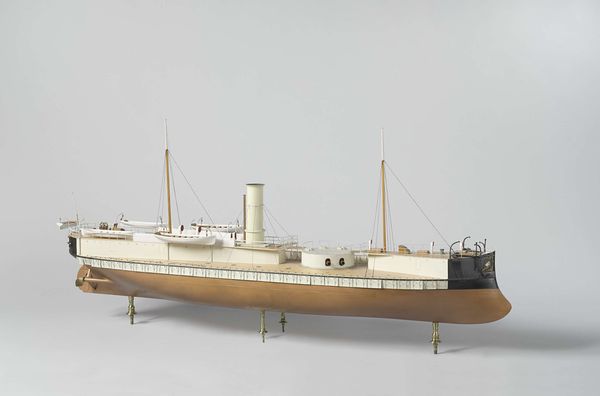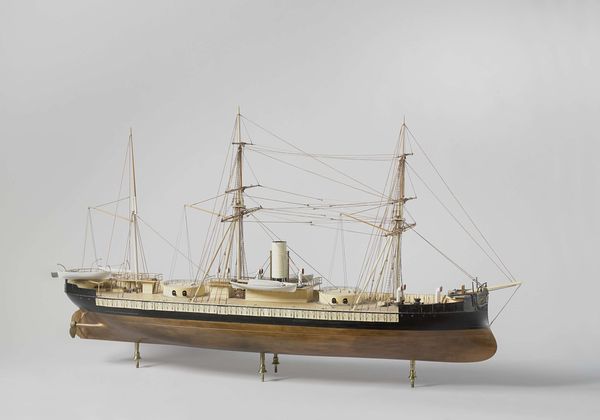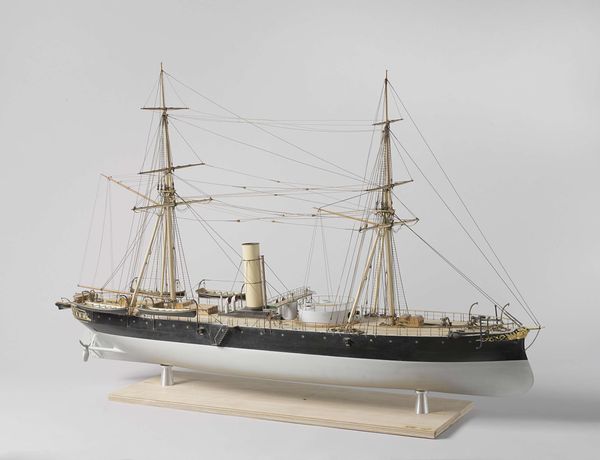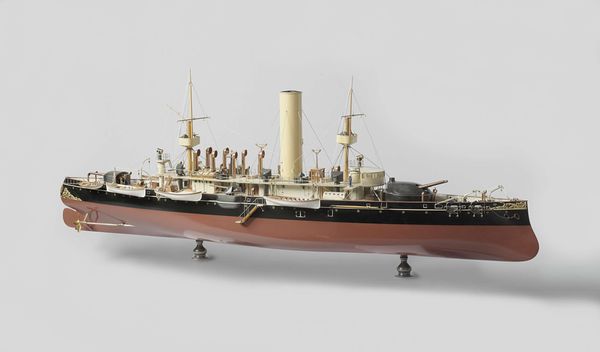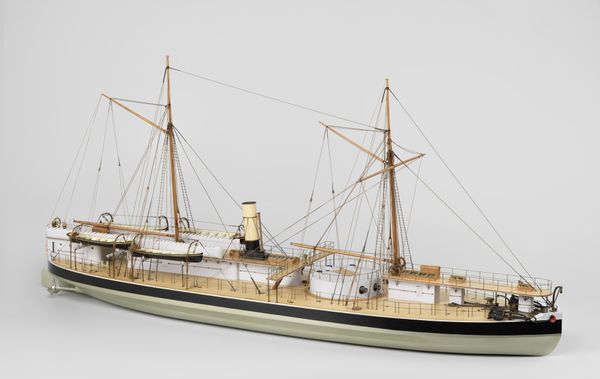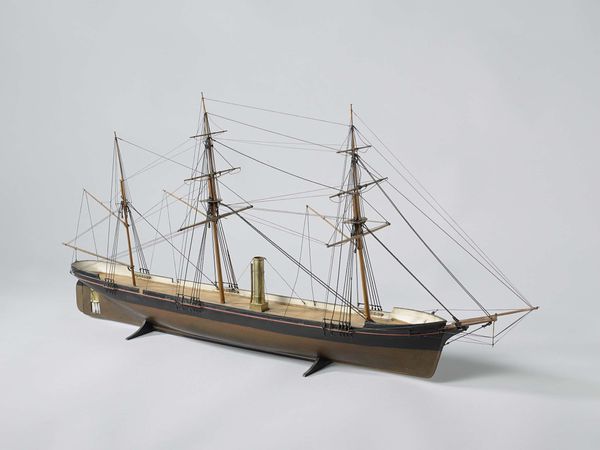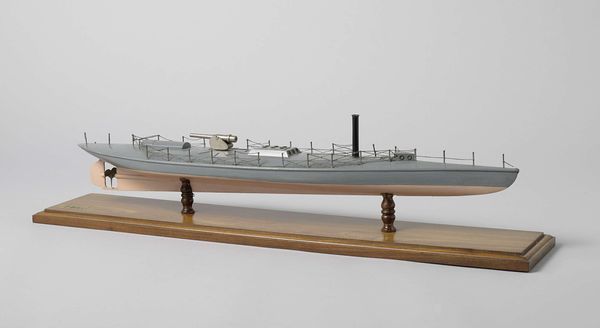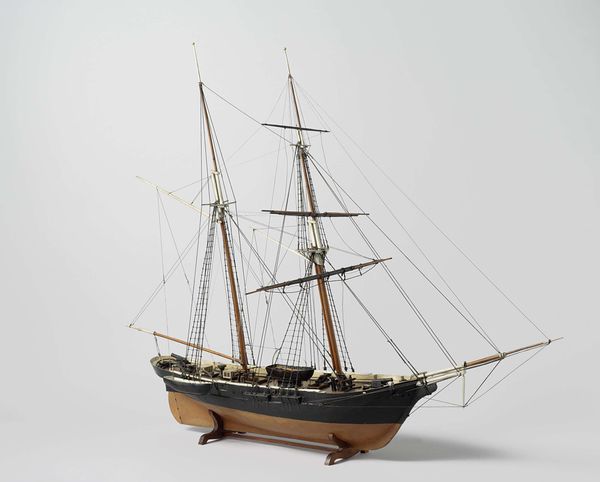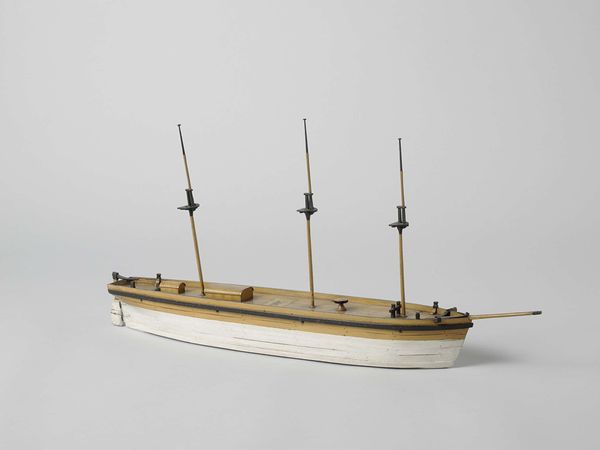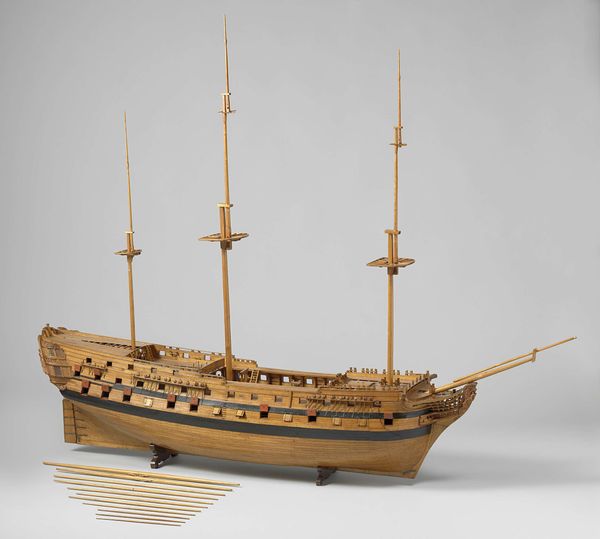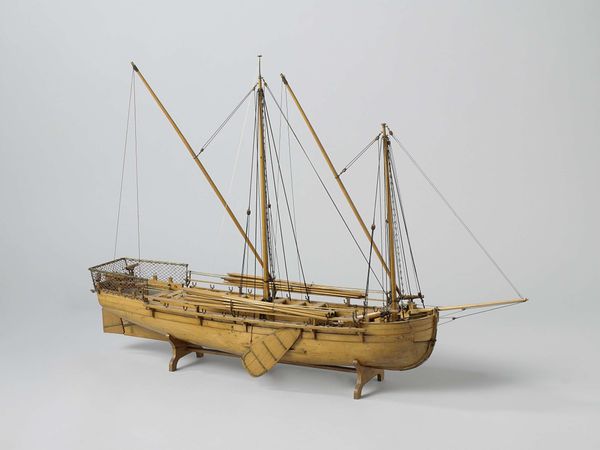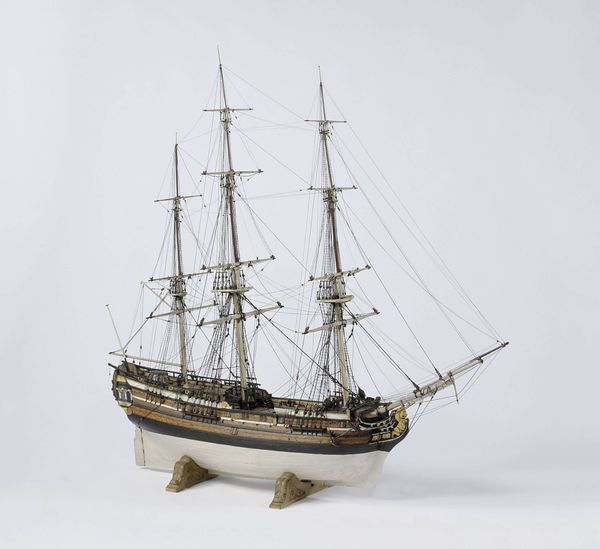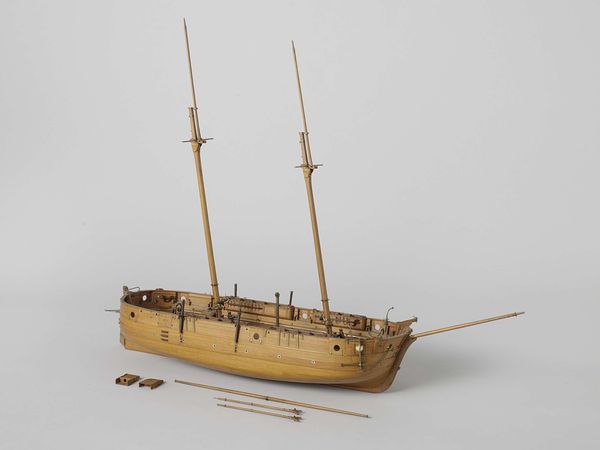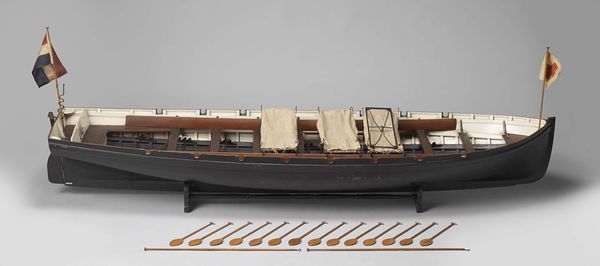
metal, sculpture, wood
#
metal
#
sculpture
#
wood
Dimensions: height 45 cm, length 117.5 cm, width 28 cm
Copyright: Rijks Museum: Open Domain
Curator: At first glance, I'm struck by the vessel's rigid symmetry and those stark lines, so indicative of a war machine, despite its miniature size. Editor: This, as you may have noticed, is a model of an Ironclad Monitor, dating back to 1868. It was designed by Laird Brothers. The sculpture consists of various materials including metal and wood. Curator: Metal and wood evoke contrasts in naval architecture of that time. What symbolic weight did these ships carry beyond their militaristic function? The Monitor became an immediate signifier for innovation in maritime combat. It suggests not just war, but technological and societal change. Editor: That is well said. This metal and wooden construction emphasizes the ship's practical design and highlights function above ornate flourishes. Consider how the bare, almost sterile finish amplifies the ironclad's original imposing, somewhat unnerving silhouette, which challenged conventional naval power at that time. Curator: Exactly! Ironclads shattered naval orthodoxies; this very model embodies the psychological impact. By this point, what we culturally understood warfare was becoming even more alienating and mechanized. Editor: Alienation yes, though the reductive colour scheme adds to this vessel's formal presence—creating an elegant contrast of pale hues, the sparseness lends an intriguing monumentality despite its compact form. We tend to think of warship design strictly regarding functional concerns, but, viewing this design element aesthetically grants fresh avenues of appreciation. Curator: True. Focusing on the historical impact, its very existence disrupted existing power structures, becoming instantly laden with symbolism: challenging tradition, dominance and forcing reassessment of what ships and their construction represent culturally. Editor: Yes, and by extension, the object becomes symbolic, capturing those seismic shifts in technology and their human effect. Thank you. Curator: Thank you.
Comments
No comments
Be the first to comment and join the conversation on the ultimate creative platform.
